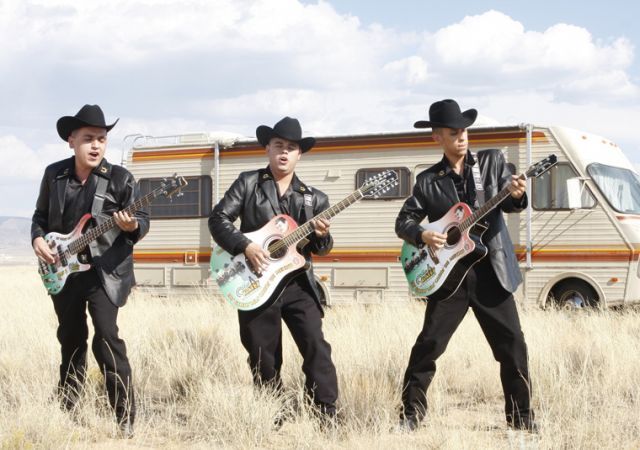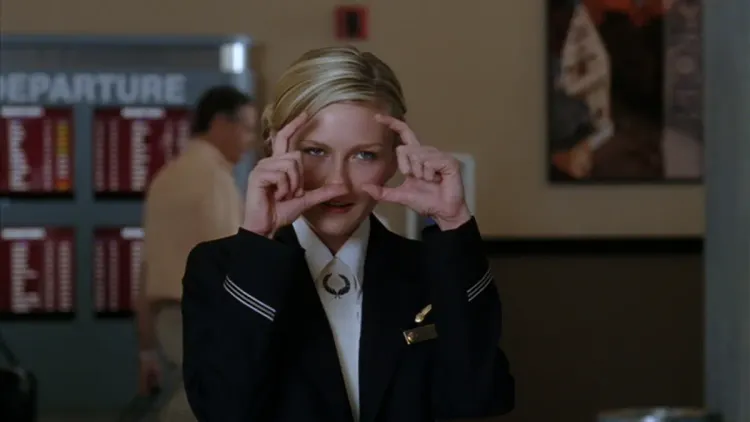Episodes: Structure vs. content (or, why I get into 99 percent of the Twitter fights I get into)


Today, I got exasperated with people on Twitter, and it all boiled down to the same thing it always does: structure vs .content.
I made what I assumed was an incredibly innocuous tweet about how Breaking Bad's greatest influence was in its cold opens (something I plan to write a longer post on for Vox, since people seemed into it). It was inspired by the upcoming episode of The Walking Dead, which has a hugely Breaking Bad-esque teaser sequence that's, honestly, better than the episode that follows (and the episode that follows is pretty entertaining).
But most of the initial responses to the tweet were baffled and seemed to boil down to, "Breaking Bad didn't invent cold opens." I reacted with bemused frustration because, of course Breaking Bad didn't invent cold opens. Obviously, I know that. So I said something along the lines of how Breaking Bad used its cold opens to create disconnected short films, rather than set the stakes for the episode at hand, and that only seemed to confuse the matter more. (It also didn't help that explaining why comedies, which have been doing basic comedic shorts featuring the characters as cold opens since the '80s took way, way more characters than Twitter allows. (Basically, comedy and drama have always been separate tracks in American TV writing, which means that similar traditions have developed completely independently of each other. It's like how certain evolutionary forms popped up all over the planet.))
The more I got into this discussion, though, I realized that this was, yet again, prompted by the fact that I tend to reverse-engineer television a lot, and most people ... don't do that. (For one thing, it can kind of suck the fun out of even shows you love.) My tendency when I watch an episode is to try to figure out what it looks like as a skeleton, as the series of notecards hanging up on a writers' room wall that it started out as, rather than the beautiful, skin-covered whole that it becomes once it's on TV.
So where, for instance, a lot of people saw the Six Feet Under cold opens, which traditionally introduced the corpse of the week and showed his or her death, as very similar to what Breaking Bad was doing, it didn't really scan to me that way, because I was seeing the note card on the wall that read, "Corpse of the week: Mel gets run over by a steamroller" (or whatever). I was thinking of the scene as a function of the story; most everybody else was thinking of it in terms of how it looked. As the discussion wound down, a friend sniffed that I had introduced the conclusion to an argument without any supporting information to back it up in my initial tweet. But when I made that tweet, I thought I was making a largely uncontroversial statement, because I assumed everybody would be on the same page.
Almost all of the arguments I get into about television are driven, in some way, by this impulse of mine, and my tendency to assume that everybody thinks about TV the same way I do. (Assuming others think as we do causes almost all arguments, actually.) In my defense, there are lots and lots of critics, especially those I've worked closely with, who tend to think about episodic structure first and everything else second. I've joked in the past that we should be called structuralists, a riff on formalist film critics, but "structuralism" has so many other connotations that it probably wouldn't be useful.
This impulse, for instance, probably explains why the first season of The Knick took so long to win me over. When you're looking at it as a series of story beats or character impulses, it's largely unimpressive, a show we've seen a bunch of times before, executed well, but not so well as to completely elevate that story. And yet once you pull out to the level where you're watching the thing, it's a dazzling show. The direction is impeccable. The acting is superb. The technical elements are wonderful. More than any other show, The Knick probably highlights the divide between critics who appreciate a show for its formal elements and those who prefer it for how it works on a structural level, or, perhaps putting it in a way that's easier to understand, those who primarily appreciate TV as a visual experience and those who are more into it as a storytelling delivery vehicle.
Flip it around, and I think you see why there's a bit of a divide between the critics and TV fan Twitter on The Americans. On a structural level, that show is constructed impeccably. It very, very rarely makes a false move. But once you pull out to that other level, the show is very muted. It has beautifully executed technical elements and direction and acting, but it sort of seems like they've been subsumed by a thick fog. The Americans is a show that rewards you only if you root around and search for that skeleton, and that's just not something lots of people want to do.
I'm not trying to suggest the way I watch things is inherently superior, nor am I going to say I apply my rubric consistently. (Hannibal could be a bit of a mess, structurally, especially in its final season, but it was so overwhelming as a visual experience that I loved it all the same.) But I do think we haven't yet developed a grammar to talk about TV on a structural level like we have for talking about film on a formal level. Maybe it's time we started.
--
Episodes is published daily, Monday through Friday, unless I don't feel like it. It is mostly about television, except when it's not. Suggest topics for future installments via email or on Twitter. Read more of my work at Vox Dot Com.





Member discussion